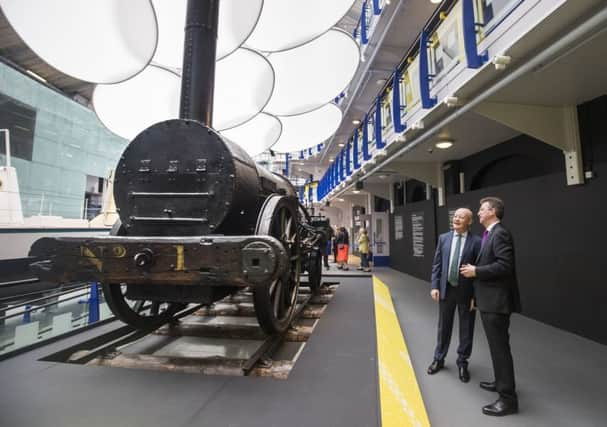The train now arriving at York is Stephenson's Rocket


The Government confirmed that the next train on the London to York line would be Stephenson’s Rocket, reversing the journey it made some 150 years ago.
In some ways, the announcement by the Culture Secretary, Jeremy Wright, followed the recent pattern on the railways of pensioning off old rolling stock to the North – but the arrival of the engine that set the template for the next two centuries was welcomed universally.
Advertisement
Hide AdAdvertisement
Hide AdThe Rocket will go on long-term display at the National Railway Museum in York, although not before it stops to pick up sightseers in Manchester.
“We’re very excited that it’s coming back home to the North,” said Ed Bartholomew, lead curator at the museum.
“We’ve known about it for some time, but to see it announced officially is a big day.”
Rocket is currently on display at the summer-long Great Exhibition of the North in Newcastle. Robert Stephenson built it there in 1829 and it had not returned since.
Advertisement
Hide AdAdvertisement
Hide AdIt will travel next – by road – to Manchester’s Museum of Science and Industry in September and then return briefly to the Science Museum to be prepared its new home in York. The venues are all part of the Science Museum Group.
Rocket was the clear winner in the 1829 locomotive trials at Rainhill in present-day Merseyside, to pick the best design to power the new Liverpool and Manchester Railway.
Stephenson’s company won the £500 prize and the contract to produce more locomotives.
But he improved on his original design, rendering Rocket obsolete almost as soon as it was built, Mr Bartholomew said.
Advertisement
Hide AdAdvertisement
Hide AdOnly one was built, and it ended its days on an obscure colliery line in Cumberland – though not before it had killed an MP, William Huskisson, who was part of a trackside welcoming party and who failed to get out of the way in time.
Mr Wright said it was “fantastic news” that Rocket would remain on long-term display in the North.
“This bold move by The Science Museum Group will ensure more people can see this national treasure and is an inspiring example of what can be done to make culture available to the widest possible audience,” he said.
Ian Blatchford, director of the Science Museum Group, said the organisation was “truly national” and “enthusiastic about bringing the world’s greatest science and technology collection to everyone”.
Advertisement
Hide AdAdvertisement
Hide AdIn Newcastle, the Discovery Museum which is exhibiting Rocket during the summer exhibition, said it had seen visitor numbers more than double since last year.
For the York exhibition, new displays will be built to accommodate the engine. It was last there in 1999, after it had been loaned to Japan as part of a festival of British art and science, opened by the then Prime Minister, Tony Blair.
“We took the opportunity of conducting an industrial archeological investigation, to see how much of it was original,” Mr Bartholomew said.
“It has not been in steam since the 1840s, but fortunately, its last owner in Cumberland recognised its significance and it was donated to the Patent Office Museum, which became the Science Museum, at that time.”